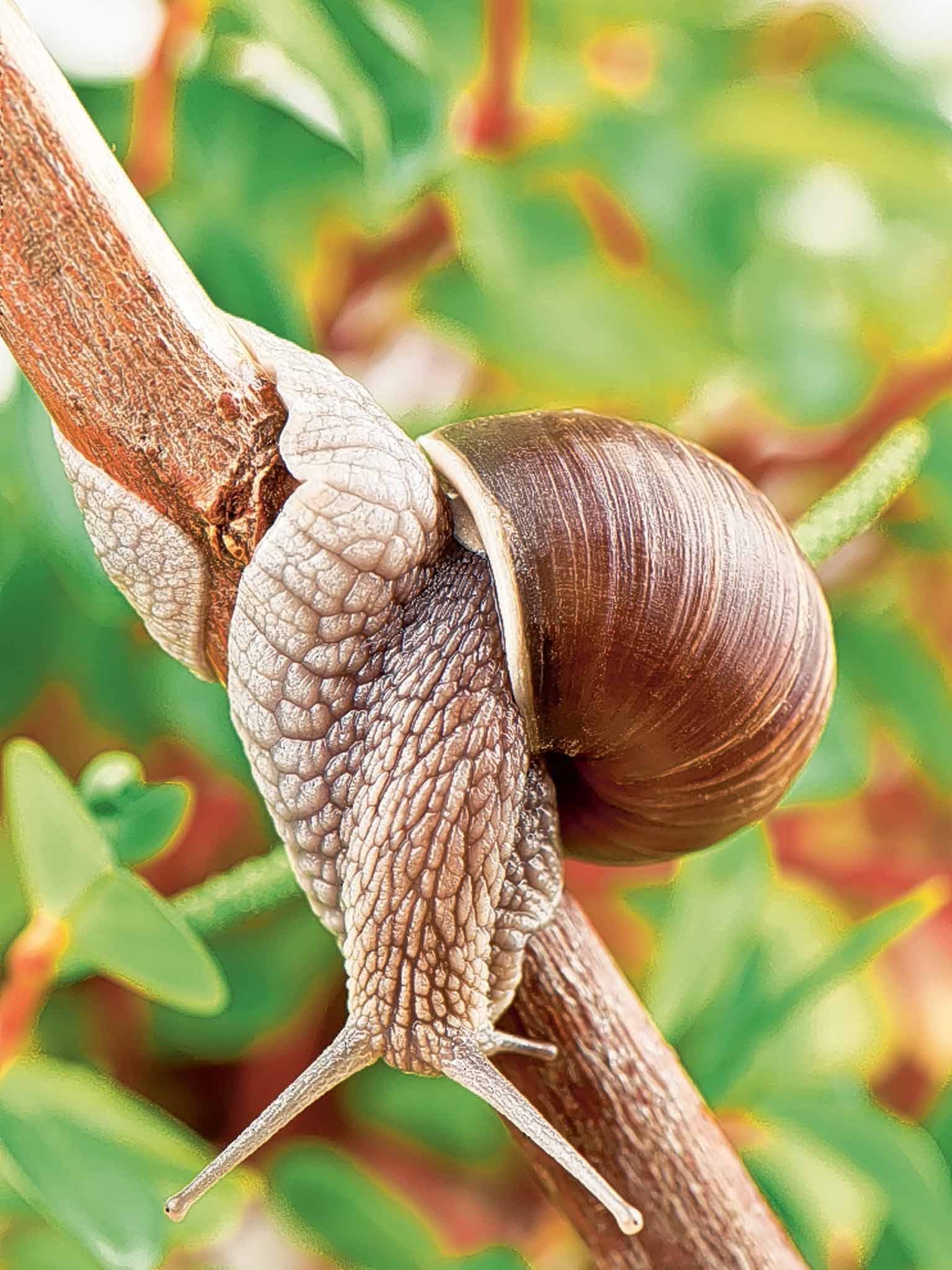The Independent's journalism is supported by our readers. When you purchase through links on our site, we may earn commission.
Emma Townshend: Summer queries from salivating snails to short-stemmed sweet peas
I like to be able to help. I also like that I know who to ask if I am too uneducated to know the answer myself.

The summer months for me have recently become a running cavalcade of smartphone pictures showing other people's dodgy garden issues. "What's this?" someone texts, with a pic of a gorgeous, shiny black-green beetle attached. "It was on my lavender." It's rosemary beetle, I reply, and you should squish it and its whole family, or it'll eat the lot. (Rosemary beetle is up there in Britain's top five pests, most years, according to the RHS, and that's at least partly because it is so rapacious, stripping whole bushes before you notice their slick, dazzling bodies lined up along the inner branches.)
Apart from pests, there are plant identifications to be done. "I saw these in someone's front garden, and I want them!" another friend posts on Facebook, with an accompanying image so bright and cactus-flowered it seems suspiciously unseasonal for early spring. I puzzle over the April-flowering dahlias, before sending her back to the original garden to check that they weren't actually plastic. (They were.)
Then there's general horticultural non-performance. "My sweet peas have short stems, and won't fill up a vase," another pal wails. I explain that the hot summer does seem to be affecting the length of sweet-pea stems, as plants go short of water. She could try pinching out the side shoots to encourage the plant to concentrate on the main stem flowers. She could also try removing the tendrils and tying the plant on to its support instead, as this stops the sweet pea wasting energy holding itself upright. "I think it might be too late," she continues to wail. And that could also be true: sweet peas flower on longer stems earlier in the life of the plant, and get shorter as they age.
I find myself wondering, while trying to shower off the heat, whether dermatologists have experienced a similar spike in their work enquiries now that their friends can just take photos of their ailments and email them.
I like to be able to help: I also like that I know who to ask if I am too uneducated to know the answer myself. (I am hopeless at houseplants, and pretty basic in my knowledge of wildflowers compared with the expert naturalists and photographers who gather on Twitter.)
But despite the change in the method of posing questions, the actual issues most people face remain roughly the same. Snails and slugs are most gardeners' number one enemy, and most of us will enthuse over a discussion about how best to repel them. Adhesive copper tape stuck around the rim of pots is generally agreed to be the best container solution; in flower beds, you can either go toxic (with slug pellets); or order nematodes, which, watered into the soil, will control the whole mollusc population of your garden for the season.
Then there's "What's wrong with my plant?" – the answer to which may in the short term be aphids or beetles or fuzzy mould or blackspot or leaf curl or any other off a long and spectacular list. But in the bigger picture, feeding and watering your plants regularly (especially during hot weather) will give them the best chance of fighting off such attacks with their own version of chemical warfare. Plants have strong immune defences when in good condition, and this is the best long-term solution. And it's mostly better to err on the side of over-watering than under-watering, especially in summer. Just not that prize orchid on your mantelpiece, though.
So then it just leaves the final set of smartphone pics: "Doesn't my garden look nice?" To which one must sometimes be very, very diplomatic.
Four more: Pest busters
Slugs
Twelve million nematodes can't be wrong: infect your sluggish garden pests with their own nasty, microscopic disease. £12.99, crocus.co.uk
Rosemary beetles
It's the larvae that eat the leaves. Spray edibles with marigold-based pyrethrum. Vitax PY Bug Killer Trigger Spray, £6.50, amazon.co.uk
Molluscs
Seeds of Italy has a Slug Bell to keep pellets accessible to molluscs but out of the way of dogs and other wildlife. £10.99, seedsofitaly.com
Flying pests
For infested indoor plants, use yellow sticky pads as they do at Kew. Neudorff Plant Flycatchers are organic; just don't get your hair stuck. £5.49, amazon.co.uk
Subscribe to Independent Premium to bookmark this article
Want to bookmark your favourite articles and stories to read or reference later? Start your Independent Premium subscription today.

Join our commenting forum
Join thought-provoking conversations, follow other Independent readers and see their replies